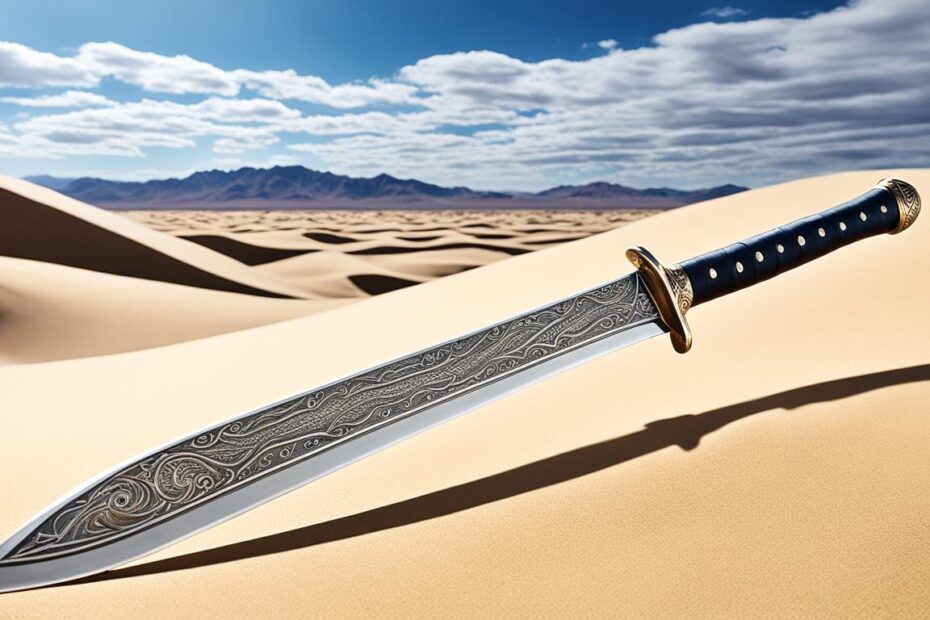Welcome to the world of Sanduko Y Daga, a traditional Filipino martial art that encompasses skill, strength, and cultural heritage. In this captivating practice, the art of sword fighting takes center stage, allowing practitioners to embrace the rich history and techniques passed down through generations.
Originating from the Philippines, Sanduko Y Daga showcases the artistry and practicality of wielding a sword. It combines the fluidity of movement, unparalleled precision, and a deep understanding of combat strategies. This martial art emphasizes the importance of discipline, respect, and self-defense, making it a holistic way to develop both the body and mind.
In this article, we will explore the techniques, history, and cultural significance of Sanduko Y Daga, shedding light on the beauty and power behind this martial art form. Whether you are a martial arts enthusiast or simply curious about Filipino culture, join us on this journey to discover the captivating world of Sanduko Y Daga.
Exploring Sanduko Y Daga Techniques
In this section, we will delve into the techniques used in Sanduko Y Daga, a traditional Filipino martial art. These techniques encompass a range of moves, strikes, and blocks that contribute to the unique style and effectiveness of this martial art.
Sanduko Y Daga techniques are rooted in the use of the sword, known as Sanduko Y Daga, which is one of the primary weapons utilized in this martial art. Practitioners develop their skills through rigorous training, focusing on mastering the precise execution of each technique.
One of the fundamental techniques in Sanduko Y Daga is the “abang” or strike. This technique involves accurately attacking the opponent with the sword, targeting strategic areas such as the head, torso, or limbs. With proper execution, the strike can neutralize an opponent’s defense and open up opportunities for counterattacks.
Key Sanduko Y Daga Techniques:
- Full Thrust – A powerful forward thrust, targeting the opponent’s vital areas
- Disarming Techniques – Specialized techniques aimed at disarming the opponent and gaining control of their weapon
- Deflection and Parrying – Skillful use of the sword to redirect and deflect incoming attacks
- Footwork and Body Positioning – Techniques that emphasize proper footwork and body positioning to enhance mobility and stability during combat
- Counterattacks – Swift and precise attacks launched immediately after successfully evading an opponent’s strike
These techniques, along with many others, are combined to create a comprehensive arsenal of moves that make Sanduko Y Daga a formidable martial art. With dedicated practice and training, practitioners become adept at seamlessly transitioning between offense and defense, ensuring their effectiveness in real-world combat scenarios.
The following table provides an overview of some essential Sanduko Y Daga techniques:
| Technique | Description |
|---|---|
| Full Thrust | A powerful forward thrust, targeting the opponent’s vital areas. |
| Disarming Techniques | Specialized techniques aimed at disarming the opponent and gaining control of their weapon. |
| Deflection and Parrying | Skillful use of the sword to redirect and deflect incoming attacks. |
| Footwork and Body Positioning | Techniques that emphasize proper footwork and body positioning to enhance mobility and stability during combat. |
| Counterattacks | Swift and precise attacks launched immediately after successfully evading an opponent’s strike. |
The History of Sanduko Y Daga
The history of Sanduko Y Daga is deeply rooted in the rich culture of Filipino martial arts. This traditional martial art has a fascinating origin story and a long-standing legacy that has shaped its techniques and cultural significance over time.
Historically, Sanduko Y Daga evolved from the ancient Filipino martial arts known as Kali or Arnis. These martial arts date back centuries and were developed by indigenous warriors as a means of self-defense and combat training. Sanduko Y Daga specifically focuses on the use of the sword, also known as the “Sanduko,” and the dagger, or “Daga,” hence its name.
Over the years, Sanduko Y Daga has undergone various transformations and adaptations. It has been influenced by different regional styles, cultural practices, and even foreign martial arts that have been introduced to the Philippines. As a result, Sanduko Y Daga has developed its unique techniques and distinctive flavor within the realm of Filipino martial arts.
“Sanduko Y Daga exemplifies the Filipino warrior’s skill and adaptability in battle. Its techniques are deeply connected to the Filipino people’s history, values, and way of life.”
Throughout history, Sanduko Y Daga has played a significant role in Filipino culture. It was not only a form of combat but also a way to honor traditions and preserve cultural identity. In ancient times, it was practiced by warriors to defend their territories and protect their communities.
The practice of Sanduko Y Daga is passed down through generations, ensuring its longevity and cultural preservation. It has become a symbol of Filipino heritage, representing the resilience, bravery, and skill of the Filipino people.
To gain a better understanding of the historical significance of Sanduko Y Daga, let’s take a look at a timeline highlighting key events in the evolution of Filipino martial arts:
| Date | Event |
|---|---|
| 12th century | Development of ancient Filipino martial arts (Kali, Arnis) |
| 16th century | Influence of Spanish colonization and introduction of European sword fighting techniques |
| 19th century | Resistance against Spanish colonization fuels the growth of Filipino martial arts |
| 20th century | Revitalization of Filipino martial arts, including Sanduko Y Daga |

As you can see from the timeline above, Sanduko Y Daga has evolved alongside the historical events and cultural changes in the Philippines. Its history is intertwined with the struggles, victories, and resilience of the Filipino people.
By exploring the history of Sanduko Y Daga, we can gain valuable insights into the cultural significance and profound impact this martial art has had on the Filipino community. It is a testament to the enduring spirit of the Filipino warrior and a source of inspiration for martial arts enthusiasts around the world.
Cultural Significance of Sanduko Y Daga
Sanduko Y Daga, a traditional Filipino martial art, holds immense cultural significance within the Filipino martial arts culture. This martial art not only embodies the techniques and skills required for combat but is also deeply rooted in the history and traditions of the Filipino people.
One aspect that highlights the cultural significance of Sanduko Y Daga is its connection to traditional Filipino weapons. The art’s emphasis on training with the sword, or “daga,” showcases the importance of weaponry skills in Filipino culture. By mastering the techniques of the sword, practitioners not only learn self-defense but also honor the legacy of their ancestors who relied on such weapons for protection and survival.
In addition to its practical applications, Sanduko Y Daga plays a prominent role in celebrations and ceremonies throughout the Philippines. It is often showcased in cultural events, festivals, and martial arts demonstrations, allowing the art form to be preserved and shared with the wider community. These public displays serve as a reminder of the art’s significance and its enduring presence in Filipino cultural traditions.
Furthermore, Sanduko Y Daga nurtures discipline, respect, and a sense of community among its practitioners. The training not only focuses on physical techniques but also instills values of honor, humility, and perseverance. By practicing Sanduko Y Daga, individuals not only connect with their own cultural heritage but also contribute to the preservation and promotion of Filipino martial arts culture as a whole.
